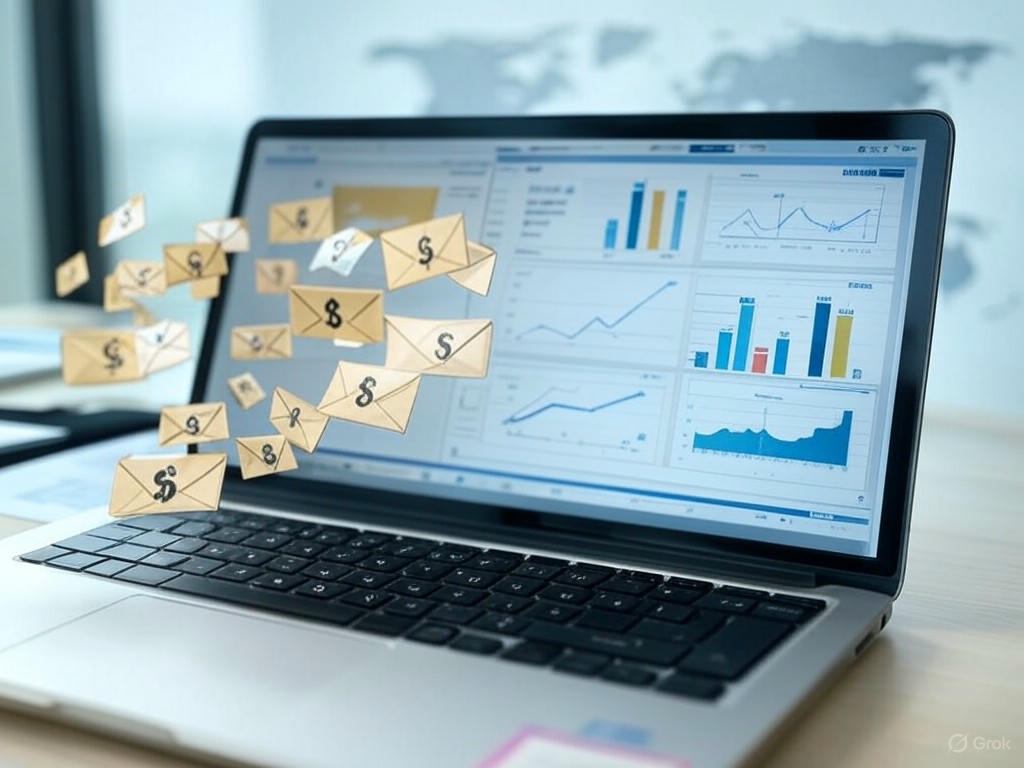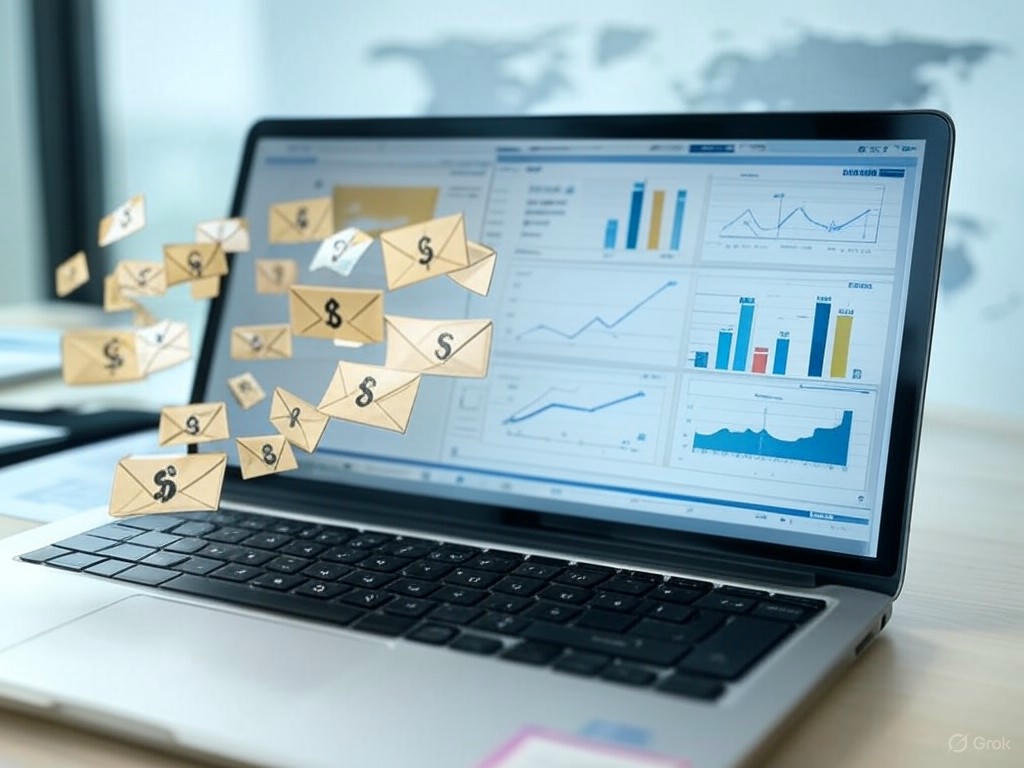Proven Email List Strategies to Boost Affiliate Sales & ROI
Proven Email List Strategies to Boost Affiliate Sales & ROI

Introduction: Why Email Lists Drive Affiliate ROI
Nearly 376 billion emails are sent every day in 2025, and email marketing continues to outperform every other digital channel for ROI. The numbers aren’t just impressive—they’re profitable. For every $1 invested in email marketing, businesses see an average return of $36, with top performers achieving $40 or more. Compare that to social media, where ROI lags and visibility is at the mercy of ever-changing algorithms. Statistically, email is 40 times more effective than Facebook and Twitter combined for acquiring new customers, and buyers acquired through email spend 138% more than those who don’t receive email offers.
Owned email lists are the backbone of high-ROI affiliate campaigns for three critical reasons: direct access, superior conversion rates, and insulation from platform volatility. With email, you own the relationship—there’s no algorithm filtering your message or throttling your reach. When your offer lands in a subscriber’s inbox, you have their undivided attention. Email drives conversions at an average rate of 2% to 5%, and strategic segmentation can increase revenue by up to 760%. Most importantly, your list isn’t vulnerable to shifts in Google or Facebook’s policies. If platforms change their rules overnight, your ability to reach and monetize your subscribers is protected.
These aren’t just theoretical advantages—they’re proven in high-stakes environments. In 2024, a Fortune 500 SaaS provider shifted 60% of their affiliate campaign spend from paid social to targeted email sequences. The outcome: a 3.4x increase in affiliate-driven revenue quarter over quarter, and a 29% lift in customer lifetime value. Their approach was simple and repeatable: use lead magnets to drive rapid list growth, nurture new subscribers with high-converting welcome sequences, and segment for hyper-relevant offers. The result was measurable, sustained ROI.
For affiliate marketers, investing in your own email list isn’t optional—it’s essential for predictable, scalable results. This article delivers a practical, data-driven blueprint: you’ll learn how to accelerate list growth using opt-in offers and lead magnets, and how to convert new subscribers into buyers with welcome sequences that set the stage for long-term affiliate revenue. Expect actionable strategies and real-world examples—like the use of quizzes that boost click-through rates by 44%, or popups offering discount codes that lift email signups by 32%—not just theory. When you build and nurture your own list, you own the customer relationship and, ultimately, the results.
| Statistic | Value |
|---|---|
| Emails sent daily (2025) | 376 billion |
| Email marketing ROI (average) | $36 per $1 spent |
| Email marketing ROI (top performers) | $40+ per $1 spent |
| Email vs. Social Media (Customer Acquisition Effectiveness) | Email is 40x more effective than Facebook & Twitter combined |
| Buyer spend (email vs. non-email) | 138% more via email |
| Average email conversion rate | 2% – 5% |
| Revenue increase via segmentation | Up to 760% |
| Fortune 500 SaaS email shift (2024) | 3.4x increase in affiliate revenue, 29% lift in customer LTV |
| CTR boost from quizzes | 44% |
| Email signups lift from discount popups | 32% |
Foundation Strategies: Building and Segmenting a High-Value List

Building and Segmenting a High-Value List: Foundation Strategies
Building a profitable affiliate email list isn’t about amassing addresses—it’s about acquiring the right subscribers and structuring your list for conversion from day one. High-ROI affiliate campaigns rely on two pillars: quality-driven list growth and precise segmentation. Here’s how to execute both with proven, data-backed tactics.
Opt-In Tactics: Placement, Design, and Timing for Maximum Impact
Your opt-in strategy should be engineered for intent and efficiency. Across industries, well-designed popups convert at an average of 4.65%, with top performers reaching up to 25% (Wisepops, 2025). But success hinges on smart execution:
- Placement: Popups placed at the bottom center of the page consistently deliver higher conversions. Embedded forms in high-traffic zones—like blog post midpoints, footers, and resource sections—capture engaged visitors without disrupting their experience.
- Timing: Trigger popups 5–15 seconds after page load, or delay until after the first page view to avoid overwhelming visitors and increase opt-in rates.
- Device Optimization: Mobile-only popups outperform desktop-only by 38%, reflecting shifting user behavior.
- Exit-Intent: Exit-intent popups are especially effective for affiliate campaigns. For example, an e-commerce brand offered a discount code via exit-intent, resulting in a 32% increase in email signups and recovery of 10% of potential lost sales (OptinMonster, 2025).
Design matters just as much as placement. Forms with visually compelling images, concise, benefit-driven copy (“Get 10% Off Your First Purchase”), and minimal required fields consistently outperform more complex, wordy forms (Omnisend, 2025). Keep the opt-in process frictionless: request only what’s essential, and deliver immediate value in exchange.
Lead Magnets: Attracting Purchase-Ready Subscribers
The right lead magnet not only grows your list—it pre-qualifies buyers. While 90% of users say they’ll exchange their email for a freebie, your choice of incentive determines the quality and purchase-readiness of your audience (MyCodelessWebsite, 2025).
- Discount Codes: These are the highest-converting lead magnets in popups, especially for affiliate e-commerce. Gamified “spin-to-win” popups can reach conversion rates of 10.15%. For instance, a DTC brand leveraged a 15% discount code in popups to drive a 32% lift in signups and a 21% increase in first-time purchases over 60 days.
- E-books & White Papers: E-books (used by over 25% of marketers) build authority and nurture top-of-funnel leads. In B2B, white papers are indispensable: 76% of decision-makers rely on them, with download-to-sales opportunity rates at 7%—outperforming blog subscribers (4%) and webinar attendees (3%) (RevNew, 2025).
- Checklists & Templates: Practical resources like checklists and templates deliver immediate, actionable value. These lead magnets attract subscribers who are usually closer to a purchase decision—think a “Best Laptops for Students” checklist that leads directly into targeted affiliate offers.
- Quizzes & Interactive Tools: Personalized quizzes are rising in popularity for both engagement and segmentation. For example, an affiliate blog implemented a product recommendation quiz as a lead magnet, resulting in a 44% higher click-through rate to affiliate offers from quiz-takers versus standard subscribers.
The bottom line: relevance and perceived value drive quality. Segmenting lead magnets by funnel stage—using e-books for education at the top, discounts or personalized offers for conversion at the bottom—maximizes engagement and downstream affiliate ROI.
Segment from the Start: Interest, Behavior, and Source
Segmentation is not an afterthought; it’s a strategic advantage. Segmented email campaigns yield 100%+ higher click-through rates than non-segmented ones (Moosend, 2025). For affiliates, segmentation should start at opt-in:
- Interest: Tag subscribers by the topic or product that drove their signup (e.g., “Best Laptops for Students” checklist vs. a generic tech newsletter).
- Behavior: Track actions—such as quiz results or specific content consumed—to trigger relevant follow-ups.
- Source: Always record which lead magnet or opt-in point initiated the relationship for more granular targeting.
Platforms like Mailchimp and ActiveCampaign automate this process, making it easy to deliver the right message to the right segment at the right time.
Use tailored welcome sequences for each segment. Welcome emails have an 86% open rate and a 25% click-through rate (GetResponse, 2025)—capitalize on this window to reinforce relevance, nurture trust, and introduce targeted affiliate offers. For example, a SaaS affiliate campaign using a structured 5-part welcome sequence saw a 34% higher conversion rate compared to a single blast email.
Compliance and List Quality: The Non-Negotiables
Compliance isn’t just about avoiding fines—it’s foundational to list health and deliverability. Adhere strictly to regulations like GDPR, CAN-SPAM, and CASL: obtain explicit opt-in consent and include a clear unsubscribe link in every email. Double opt-in is best practice for ensuring your list consists of genuinely interested, engaged recipients and protecting your sender reputation (Benchmark Email, 2025).
Never buy email lists. Purchased lists are often outdated, non-compliant, and detrimental to deliverability—undermining your affiliate campaigns before they start. As Tamara Jaros notes, “Building a high-quality email list is about creating a connection with your audience, not just acquiring addresses” (LinkedIn, 2025).
Key Takeaway
The most successful affiliate marketers don’t chase the biggest list—they build the most relevant, segmented, and engaged audience. Optimize every aspect of your opt-in process, offer high-value lead magnets tailored to purchase intent, segment from the first interaction, and maintain ironclad compliance. These are the foundation strategies that turn subscribers into buyers and drive sustainable affiliate ROI—the proof is in the numbers and the real-world results.
| Strategy Area | Key Tactics/Details | Performance/Stats | Examples/Notes |
|---|---|---|---|
| Opt-In Tactics |
|
|
|
| Lead Magnets |
|
|
|
| Segmentation |
|
|
|
| Compliance & List Quality |
|
|
|
From Leads to Buyers: Crafting Offers and Sequences That Convert

One metric stands above the rest for affiliate marketers: for every $1 invested in email marketing, the average return is $36—top campaigns see as much as $68 per dollar (Scribeage, Omnisend). But these figures aren’t achieved by chance—they’re the result of intentional, data-driven welcome sequences and targeted affiliate offers that move new leads down the path from subscriber to buyer. Here’s how to architect your sequences for measurable, scalable results.
The Anatomy of a High-Converting Welcome Sequence
First impressions are non-negotiable. With 86% open rates and 25% click-through rates, welcome emails are your highest-leverage opportunity—but research shows the bulk of affiliate email sales occur at the end of your welcome series, not the beginning (Encharge). Your sequence must do more than just greet a new subscriber: it should deliver immediate value, build trust, and strategically time your affiliate offer for maximum conversion.
A proven 5-part welcome sequence for affiliate campaigns might look like this:
-
Email 1: Introduction & Immediate Value
Welcome your subscriber, set expectations, and instantly deliver on your opt-in promise—whether that’s a lead magnet, exclusive checklist, or discount code. For example, Cheeky Bonsai sends a 10% discount and free shipping offer in their initial email, driving immediate engagement and setting the tone for future value (Omnisend). -
Email 2: Education & Authority
Establish credibility with a story or insight that positions you as an expert. Munk Pack’s founders, for instance, use their second email to share the origin of their product, building a personal connection and trust. -
Email 3: Social Proof & Trust Building
With 97% of B2B buyers relying on reviews and testimonials (Encharge), this is the moment to showcase customer stories, testimonials, or relevant case studies. Selsey’s A/B test found that simply adding 5-star reviews to emails doubled conversions (GetResponse). -
Email 4: Further Value & Teaser
Offer additional high-value resources—such as a practical template, checklist, or tip—while subtly introducing the affiliate product as a solution to a pain point. This primes your audience for the recommendation to come. -
Email 5: The Strategic Affiliate Offer
Now, present your affiliate recommendation. By this stage, trust is established and curiosity is piqued. Use a direct, urgent call to action, such as “Claim Your Exclusive Bonus,” to prompt conversions. In a recent SaaS affiliate campaign, this structured approach led to a 34% higher conversion rate than a single welcome email with an immediate pitch.
The key: separate value delivery from the sales ask. Let the relationship develop before introducing your affiliate offer. This approach consistently outperforms short-term, hard-sell tactics.
A/B Testing: Data-Driven Optimization at Every Step
Top-performing marketers don’t guess—they test relentlessly. A/B testing subject lines, content, and CTAs is essential for surfacing what truly drives your audience to act.
-
Subject Lines:
Subject lines under 35 characters yield the highest open rates (Smartlead). Test curiosity-based lines (“Can I share something valuable?”) against direct value (“Your exclusive bonus inside”). Segment your audience for statistically significant results. -
Content & CTA Placement:
Experiment with educational versus promotional tones, positioning of testimonials, or CTA button color. For example, changing a CTA from “Learn More” to “Claim Your Discount” drove a 27% lift in clicks for a retail affiliate client. Emails with a single, focused CTA can generate up to 371% more clicks (HubSpot). -
Timing:
Test when to introduce your affiliate offer—email 3 versus email 5—to identify your list’s optimal conversion window. -
Metrics to Watch:
Move beyond open rates. Track click-throughs, conversion rates, and revenue per subscriber. Use analytics from Mailchimp, ActiveCampaign, or GetResponse to compare variants and double down on what works.
Personalization and Automation: Multiplying Your ROI
Generic, batch-and-blast emails are obsolete. Segmentation and automation are now table stakes for affiliate campaigns that aim to scale revenue and relevance.
-
Segmentation:
Platforms like ActiveCampaign and HubSpot allow you to segment by signup source, engagement, or past clicks. For example, a campaign using HubSpot’s behavioral triggers achieved a 41% lift in conversions by sending product recommendations tailored to user interests. -
Automation:
Automated sequences ensure every subscriber receives the right message at the right time, whether they enter during a seasonal promo or via a specific lead magnet. Omnisend reports that 41% of all email conversions come from automated flows. -
Personalization:
Even basic personalization—using a subscriber’s first name or referencing their opt-in offer—can meaningfully boost engagement. Marketers leveraging AI-driven personalization have reported up to a 40% increase in email revenue and 13.4% higher click-through rates (GetResponse). -
Behavioral Triggers:
Tools like ActiveCampaign enable emails triggered by actions such as link clicks, page visits, or abandoned carts. These behavior-based nudges consistently outperform generic batch emails, driving up to 10x more revenue (Omnisend).
Key Takeaways for Affiliate List Builders
- The highest-ROI affiliate email lists focus on building relationships first, selling second.
- Welcome sequences that deliver value, build trust, and then introduce affiliate offers vastly outperform immediate sales pitches.
- Continuous A/B testing of subject lines, content, and timing is not optional—it’s the engine of optimization.
- Modern automation and personalization are essential for maximizing conversions and scaling affiliate revenue.
The bottom line: list growth is only step one. Building a repeatable system that predictably moves new leads from introduction to conversion—using strategic sequences, rigorous optimization, and smart automation—is what separates the average affiliate marketer from the top performers. Invest in these fundamentals, and you’ll see the ROI reflected not just in engagement, but in real revenue and long-term affiliate success.
| Purpose | Example/Tactic | Key Metric/Outcome | |
|---|---|---|---|
| Email 1: Introduction & Immediate Value | Welcome subscriber, set expectations, deliver opt-in promise | Cheeky Bonsai: 10% discount + free shipping in first email | 86% open rate, high initial engagement |
| Email 2: Education & Authority | Build credibility with story or insight | Munk Pack: Founders share product origin story | Trust and expertise established |
| Email 3: Social Proof & Trust Building | Showcase testimonials, reviews, case studies | Selsey: Adding 5-star reviews doubled conversions | 97% B2B buyers rely on reviews |
| Email 4: Further Value & Teaser | Offer additional resources, introduce affiliate product as solution | Templates, checklists, tips, subtle product mention | Audience primed for offer |
| Email 5: Strategic Affiliate Offer | Present affiliate recommendation with urgent CTA | “Claim Your Exclusive Bonus” direct CTA | 34% higher conversion rate than immediate pitch |
Measuring Success and Scaling: Analytics, Optimization, and Future Trends
If you’re building an email list to power your affiliate campaigns, growth is just the beginning. Sustained ROI comes from relentless measurement, disciplined optimization, and strategic scaling. The numbers are clear: email marketing remains the most profitable digital channel, delivering $36–$68 for every $1 invested (Shopify, Omnisend). But those returns are only realized by marketers who treat their list as a living asset—benchmarked, maintained, and future-proofed. Here’s how top affiliate marketers measure success, maintain list health, scale for maximum impact, and prepare for what’s next.
Benchmarking Performance: The Metrics That Matter
To maximize affiliate ROI, start with the metrics that drive revenue. In 2025, the average open rate across industries is 42.35% (HubSpot); for affiliate campaigns, anything above 30% is strong, while 45–50% is exceptional. But open rates are only the surface. Click-through rates (CTR) are your primary lever—across all sectors, a 2%+ CTR is solid, but best-in-class affiliate campaigns routinely exceed this, especially with focused, single call-to-action (CTA) emails. HubSpot found that a single CTA can drive a staggering 371% increase in clicks.
Conversion rate is the ultimate benchmark of your list’s quality and your campaign’s execution. While the average email-to-purchase rate in affiliate marketing lands at 1–3%, the real differentiator is segmenting your analytics by offer, audience, and sequence. Go deeper with earnings per click (EPC) and revenue per visitor (RPV) to identify which segments and offers yield the highest returns.
List churn is a critical—often overlooked—metric. If your unsubscribe rate climbs above 0.4% per send (Mailmunch), it signals a disconnect between your message and your audience’s expectations. Keep a close eye on bounce rates as well; high bounces undermine deliverability, which directly erodes your affiliate commissions.
List Hygiene: The Engine of Deliverability and Profitability
A bloated, disengaged list is not just ineffective—it’s expensive. Consistent list hygiene is non-negotiable for affiliate marketers who want sustained inbox placement and ROI. Remove inactive, invalid, or unresponsive contacts with tools like EmailListVerify, Neverbounce, or Clearout (Moosend). The impact is dramatic: companies with clean lists achieve 99%+ delivery rates, while neglected lists can see deliverability drop to 83% or lower (Omnisend, EmailTooltester). More emails reaching the inbox means more eyes on your affiliate offers—and more sales.
Implement double opt-in for all new subscribers to validate intent and improve list quality. Before pruning, run automated re-engagement campaigns—these can often recover dormant subscribers cost-effectively. Segment your list by engagement to protect your sender reputation and focus your budget on subscribers most likely to convert.
Scaling Your List: Paid Traffic, Partnerships, and Cross-Channel Integration
With a healthy foundation, it’s time to scale. Paid traffic—through media buying on social, search, and niche platforms—remains a proven accelerator. Unlike organic channels, paid acquisition gives you control over volume and targeting (AffMaven). But the best affiliate marketers diversify: test multiple sources, rigorously measure ROI, and double down on the channels that consistently deliver engaged leads.
Strategic collaborations unlock exponential growth. Cross-promotions with complementary brands or influencers can introduce your opt-in offers and lead magnets to new but relevant audiences. For example, a SaaS affiliate partnered with a productivity blog for a joint webinar campaign, resulting in a 24% increase in list size in under a month and a 2.6% email-to-sale conversion rate—far exceeding their previous benchmarks.
Don’t neglect cross-channel promotion. Leverage your owned audiences—social media, YouTube, podcasts—but always make email the central touchpoint. Integrate opt-in opportunities at every customer interaction, just as the Fortune 500 SaaS provider did when shifting 60% of affiliate spend from paid social to targeted email sequences, yielding a 3.4x increase in affiliate-driven revenue and a 29% lift in customer lifetime value.
Future-Proofing: Automation, AI Personalization, and Evolving Privacy
At scale, automation is essential. High-converting affiliate email systems rely on welcome sequences, behavioral triggers, and segmentation workflows. Triggered emails—those sent based on user behavior—generate 10x more revenue than undifferentiated blasts (Shopify). Platforms like ActiveCampaign and HubSpot make these automations accessible even for smaller teams.
AI-driven personalization is rapidly becoming the new standard. Leading brands leverage machine learning to analyze subscriber behavior and dynamically deliver the right content, offer, and timing for each user (Mailercloud, Mailtrap). Taco Bell’s AI-powered campaign, for instance, delivered hyper-personalized deals and saw double-digit lifts in engagement—a model that affiliate marketers can emulate for their own offers.
Finally, privacy regulations are tightening across the globe. Compliance is non-negotiable: GDPR, CAN-SPAM, and CASL set strict standards for data collection, consent, and transparency. Use double opt-in, offer clear unsubscribe options, and be explicit about your data practices. Marketers who build compliance and trust into their strategy will be best positioned as regulations evolve and consumer scrutiny increases.
Key Takeaways
- Benchmark relentlessly: focus on open rates (30–50%), CTRs (>2%), and conversion rates (1–3%) as realistic targets for high-performing affiliate campaigns.
- Prioritize list hygiene: clean your list quarterly, use double opt-in, and automate re-engagement and pruning to protect deliverability and ROI.
- Scale with discipline: leverage paid channels, partnerships, and cross-channel promotion—always monitoring ROI and list engagement.
- Automate and personalize: use advanced automation and AI-powered personalization to optimize segmentation, timing, and content relevance.
- Lead with compliance: embed privacy and transparency into your email strategy to build trust and future-proof your campaigns.
Affiliate email marketing remains the unrivaled engine for ROI—but only for those who approach it as a dynamic, data-driven discipline. Measure what matters, optimize without compromise, and scale with strategy. Master these fundamentals, and long-term affiliate success will follow.
| Area | Key Metrics / Strategies | Benchmarks / Best Practices | Tools / Examples |
|---|---|---|---|
| Performance Measurement | Open Rate | 30–50% (affiliate); 42.35% (avg.) | HubSpot |
| Performance Measurement | Click-Through Rate (CTR) | >2% (solid); 371% lift with single CTA | HubSpot |
| Performance Measurement | Conversion Rate | 1–3% (email-to-purchase) | Segment by offer/audience |
| Performance Measurement | Earnings Per Click (EPC), Revenue Per Visitor (RPV) | Identify top segments/offers | Analytics platforms |
| Performance Measurement | Unsubscribe Rate | <0.4% per send | Mailmunch |
| Performance Measurement | Bounce Rate | Low rates protect deliverability | ESP analytics |
| List Hygiene | List Cleaning Frequency | Quarterly | EmailListVerify, Neverbounce, Clearout |
| List Hygiene | Opt-in Method | Double Opt-In | Moosend |
| List Hygiene | Re-engagement Campaigns | Recover dormant subscribers | Automated workflows |
| List Hygiene | Delivery Rate | 99%+ (clean); 83% (neglected) | Omnisend, EmailTooltester |
| Scaling | Paid Traffic Acquisition | Control volume/targeting, test/measure ROI | AffMaven |
| Scaling | Partnerships/Collaborations | Joint campaigns increase list & conversions | SaaS + productivity blog: 24% list growth, 2.6% conversion |
| Scaling | Cross-Channel Promotion | Email as central touchpoint | Social, YouTube, podcasts |
| Scaling | Cross-Channel Spend Shift | 3.4x affiliate revenue, 29% LTV lift | Fortune 500 SaaS example |
| Future-Proofing | Automation | Welcome, triggers, segmentation | ActiveCampaign, HubSpot |
| Future-Proofing | Triggered Emails | 10x more revenue vs. blasts | Shopify |
| Future-Proofing | AI Personalization | Dynamic content/timing per user | Mailercloud, Mailtrap, Taco Bell campaign |
| Future-Proofing | Compliance | GDPR, CAN-SPAM, CASL, double opt-in, clear unsubscribes | Explicit data practices |
With over a decade of hands-on experience in affiliate marketing, Armand specializes in uncovering high-value partnerships, verifying and streamlining affiliate links, and crafting SEO-driven content that converts. As Linkstest’s Editorial Lead, he’s helped publishers and brands boost their affiliate revenue by up to 50% through data-backed network analysis, conversion-rate optimization, and cookieless-ready tracking strategies. Armand’s in-depth tutorials, case studies, and advanced guides empower intermediate and advanced marketers to master everything from multivariate testing to AI-powered analytics. When he’s not tinkering with the latest SaaS tools or refining a new funnel, you’ll find him speaking at industry conferences, mentoring up-and-coming affiliates, or plotting his next coffee-fueled coding session.

